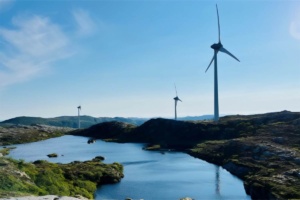Efforts should concentrate on the use of green fuels, funding mechanisms, and technologies that enhance operational efficiency and design. This approach will help reduce emissions and improve energy efficiency.
SINTEF is participating at COP as an independent observer, committed to advancing sustainable climate and energy solutions. To support this goal, we are providing advice to climate negotiators on 15 key areas with the potential to significantly reduce emissions.
Recommendations for emission reduction in maritime sector
- Stimulate energy efficiency through requirements and support schemes for energy-saving technologies.
- Utilise contracts for difference to stimulate the uptake of green fuels and development of value chains and infrastructure by counteracting high costs.
- Establish green corridors as an effective means of getting started with the enormous port infrastructure development that is needed to make green fuels available. This will entail the creation of a clear and credible strategy for the selection, development and long-term financing of these corridors, to ensure that industry will invest.
- Support the development of refrigeration systems and energy systems on board ships based on natural refrigerants to reduce and eliminate large direct emissions from systems based on fluorinated gases.
Problem
The maritime sector currently accounts for 3% of global greenhouse gas emissions. Decarbonisation of this sector is therefore crucial for reaching our climate goals. In July 2023, the International Maritime Organisation (IMO) agreed on a new strategy for reducing greenhouse gas emissions from ships, with the goal of a 20-30% reduction by 2030 and 70-80% by 2040 in comparison with 2008 levels, building to net-zero emissions by 2050.
Decarbonising the maritime sector faces several challenges. Alternative green fuels are difficult to procure on a sufficient scale, are expensive, and often require considerable space on the vessel. It is therefore important to invest in more research and technology development, in relation to both green fuels and energy efficiency through optimising ship design and operation. This includes logistics planning and route patterns.
For goods that are transported refrigerated, an on-board refrigeration system is necessary. Currently, these systems largely use refrigerants with a high global warming potential (GWP). 96% of reefer containers use R134a, which has a GWP of 1430. There is a risk that operators will switch to using per- and polyfluoroalkyl substances (PFAS) as refrigerants, which have a low GWP but can negatively impact people’s health and the environment. Instead, there is the significant opportunity to switch to natural refrigerants, but this requires the use of correct systems to ensure that they are both safe and energy efficient.
Solution
The 2023 IMO Strategy on Reduction of GHG Emissions from Ships opens up the possibility of implementing a set of regulations that will drive transformation in the maritime sector. It is crucial to follow up on the good work that has been done, and get these regulations in place.
Effective decarbonisation of the maritime sector will be based on both design and operation optimisation, energy efficiency and emission-free fuels. The bottom line for these measures is increased collaboration across the maritime value chain to build a sufficient basis for investment. This applies, among other things, to cooperation between the goods owners and shipping companies, financing maritime projects with low emissions, cooperation between the transport operator and the port to reduce waiting times, cooperation between different transport links from the supplier to the recipient, and cooperation on the availability of fuel through, among other things, green shipping corridors.
Energy efficiency can be achieved through several different measures, and should be supported through research on a number of topics, including: optimised ship design, including the use of modern sail technology, improved logistics planning to increase the filling rate of cargo ships, use of efficient electrical drive lines with batteries, and removing fouling from the hull to reduce frictional resistance.
The maritime sector is diverse, with many different needs for emission-free concepts that can be adapted to individual ships. The use of new fuels can be implemented through new fuel cells and various ship engines, as well as the possibility of onboard CO2 capture. A number of technologies and systems have already been adapted to various green fuels, but further development and upscaling are crucial for lowering costs and accelerating the transition. In addition, investments in renewable power generation must be increased in order to obtain sufficiently large volumes of fuel with a low CO2 footprint.
Main COP29 recommendation: International research communities and industrial partners are developing technologies to reduce emissions and advance the energy transition, and we strongly recommend establishing a global North-South R&D program with open, competitive calls to ensure a fair, accelerated path to a sustainable economy.











Comments
No comments yet. Be the first to comment!